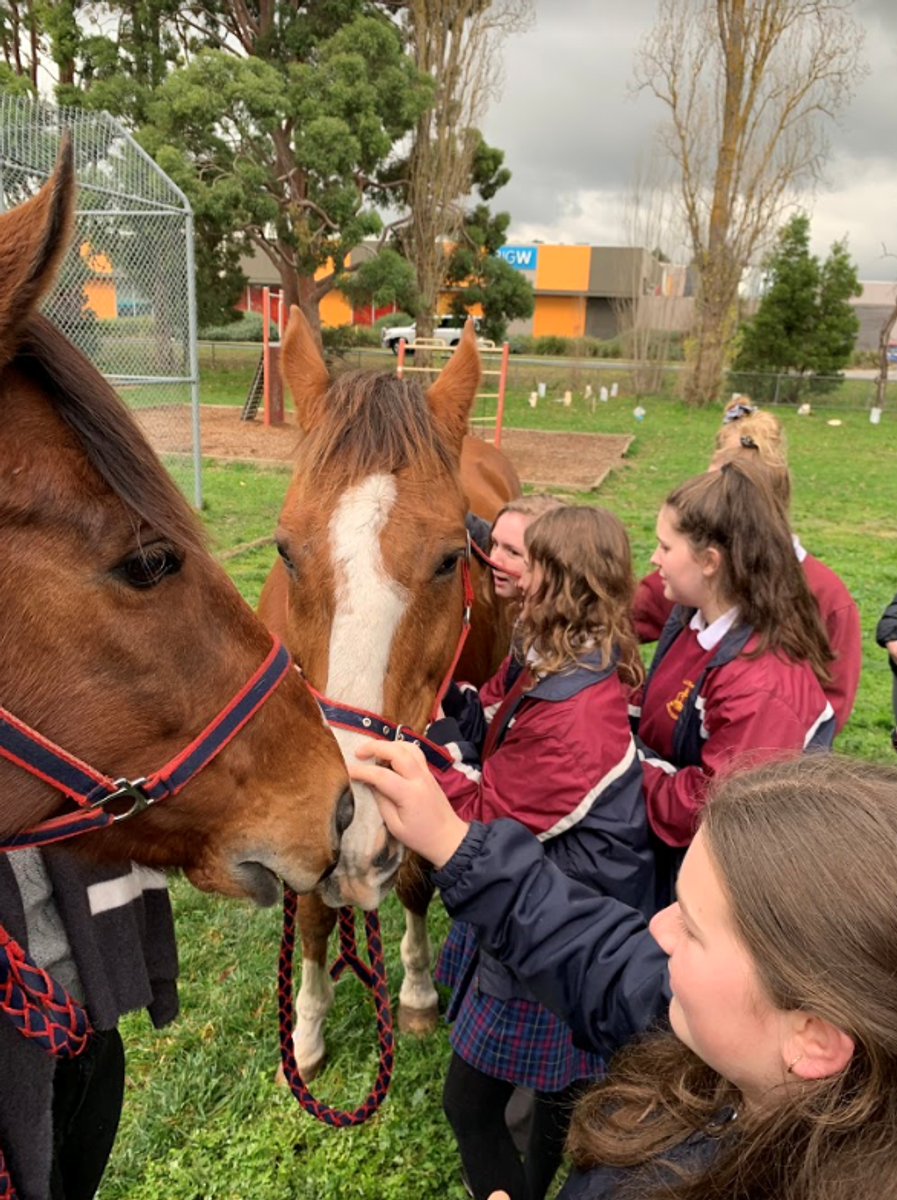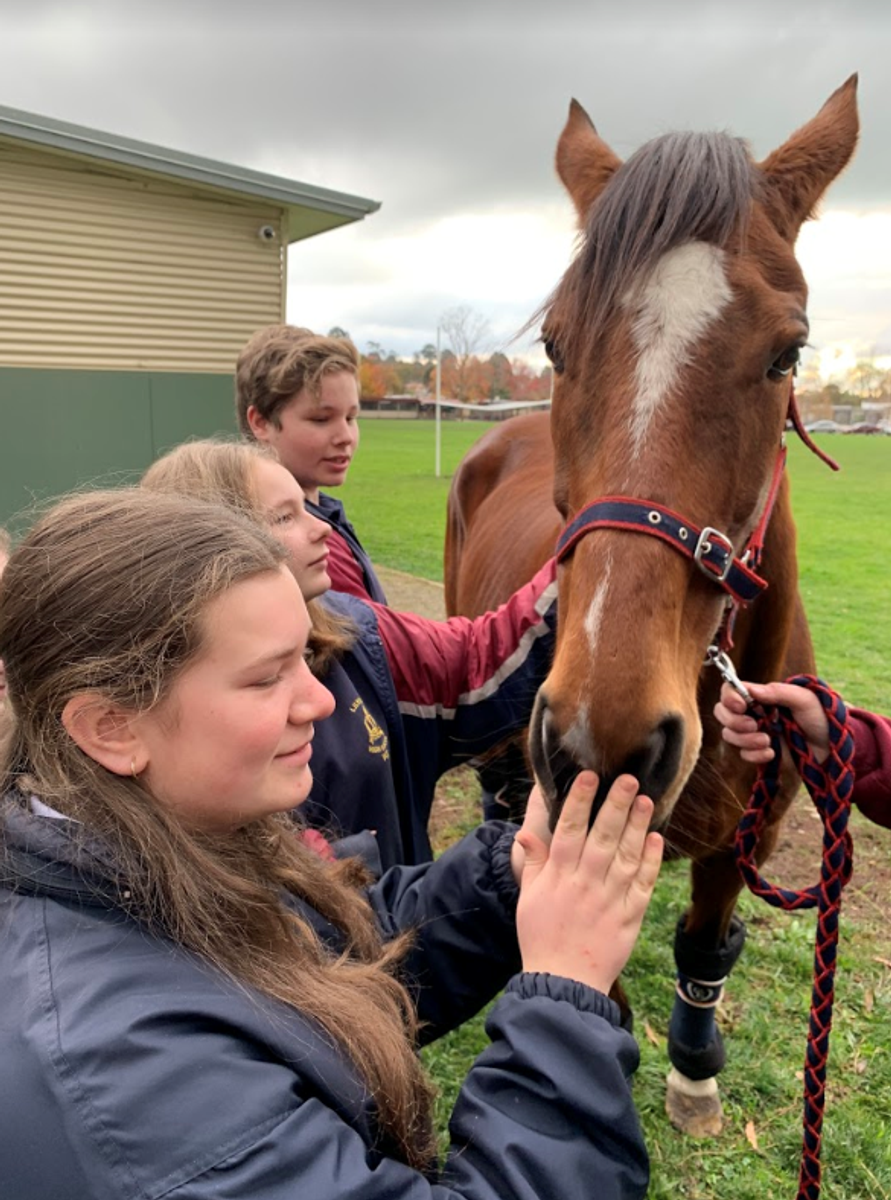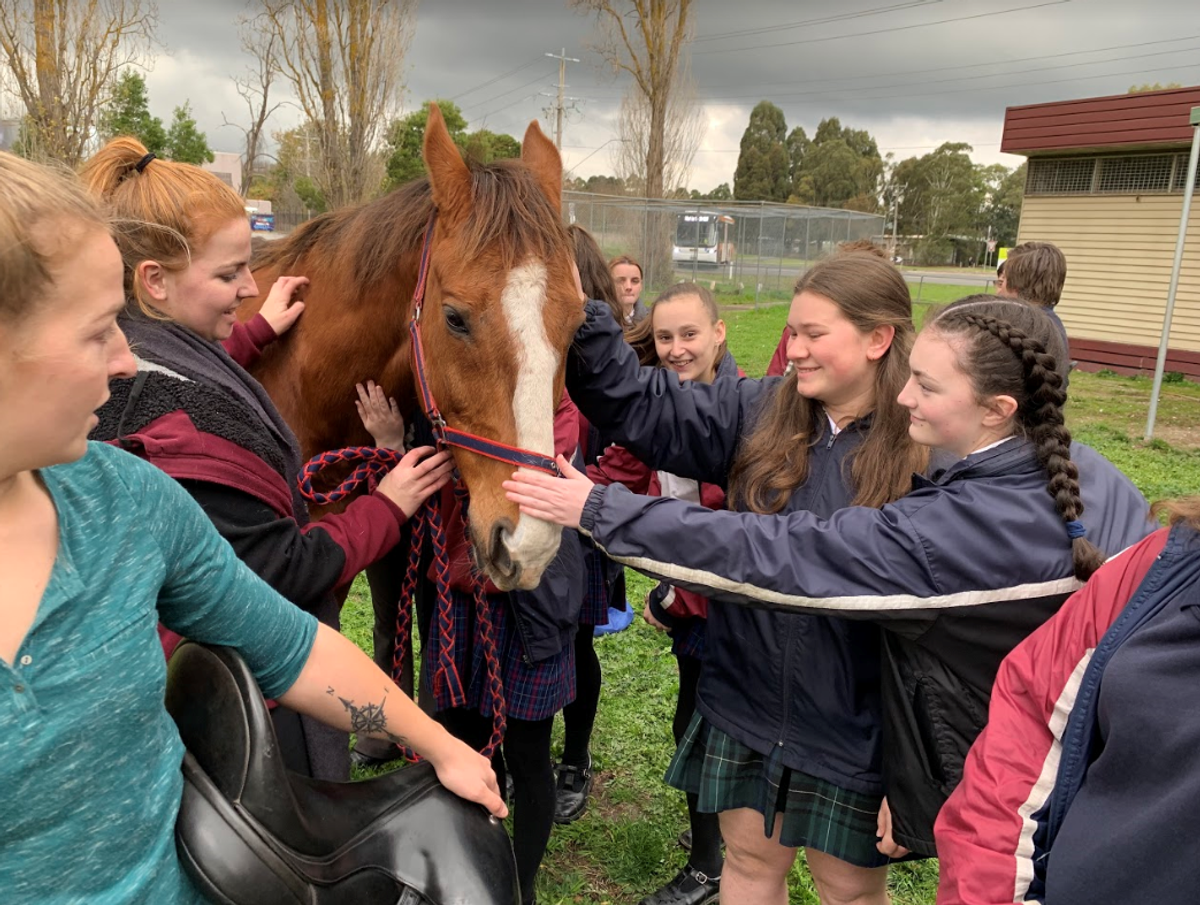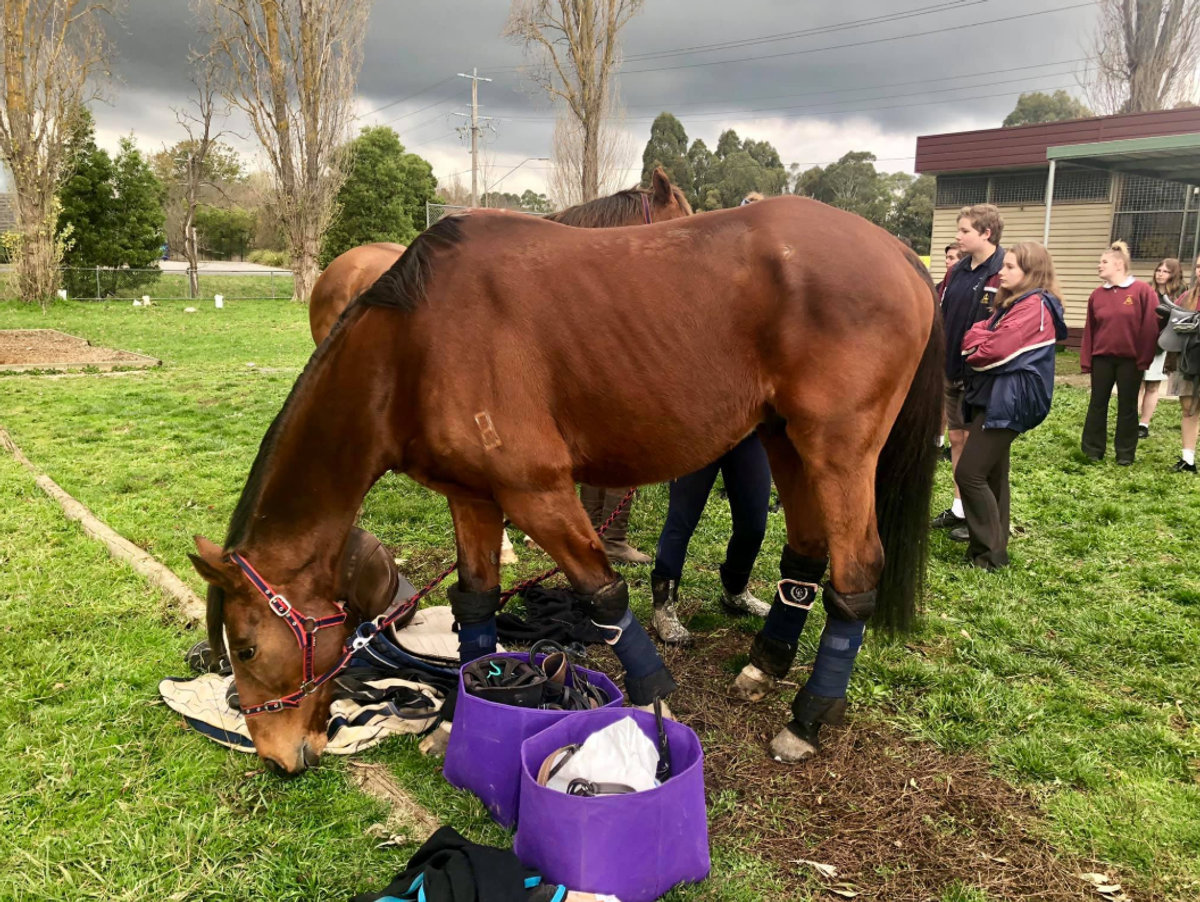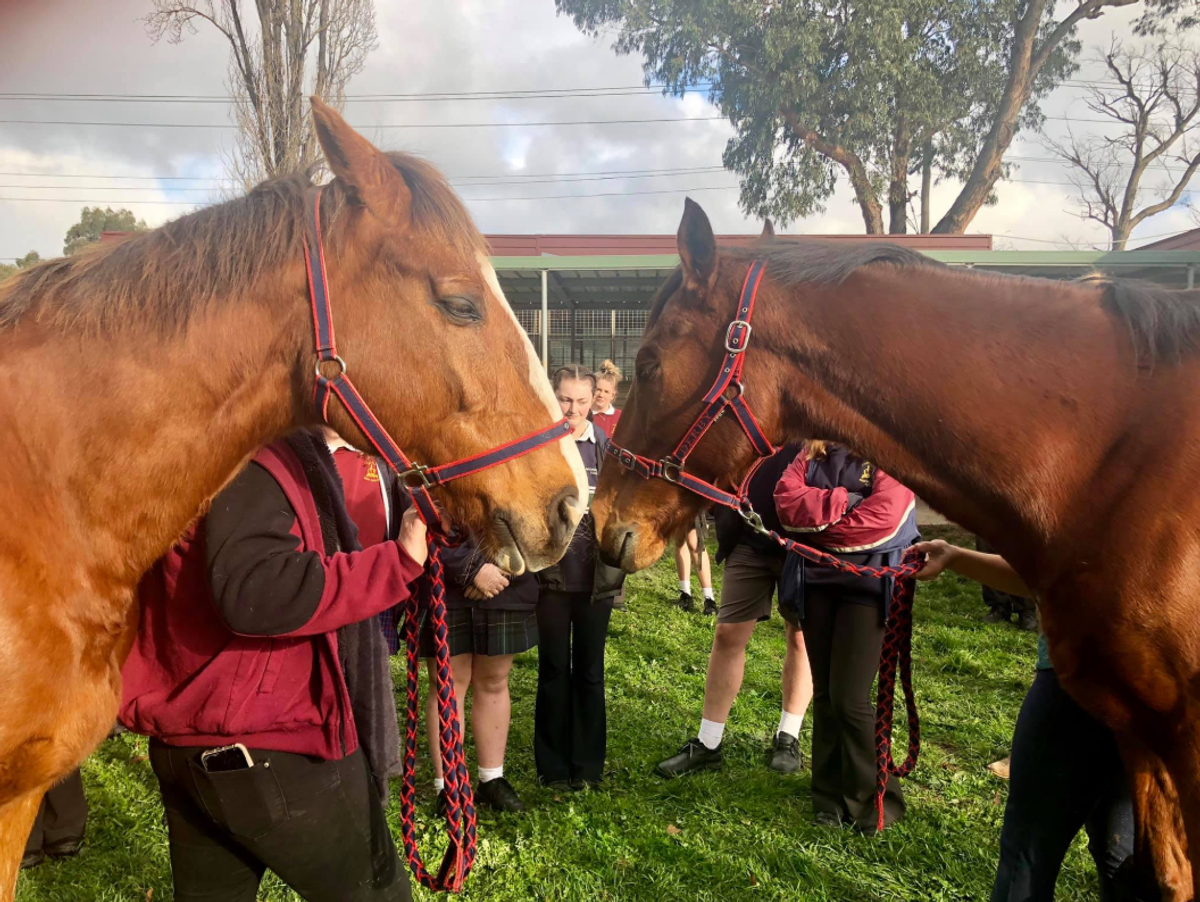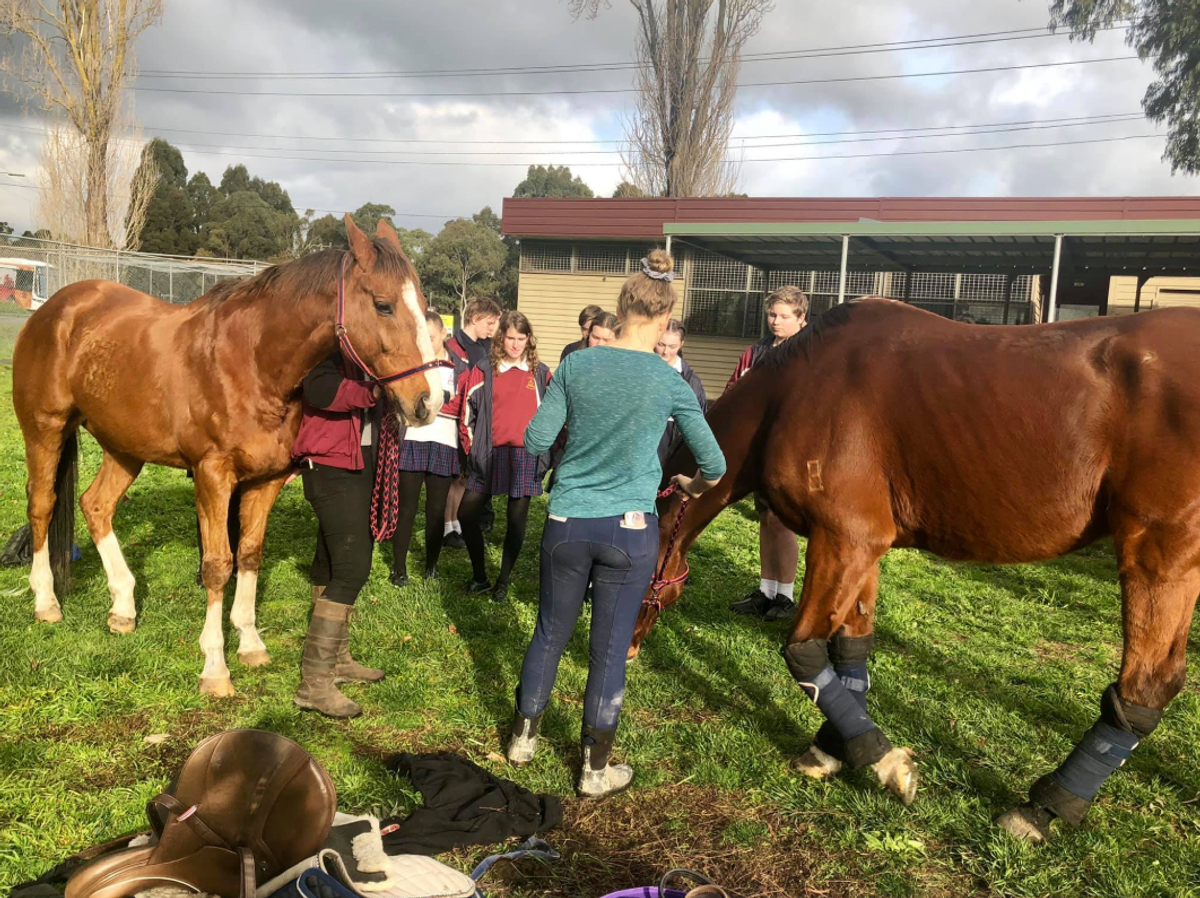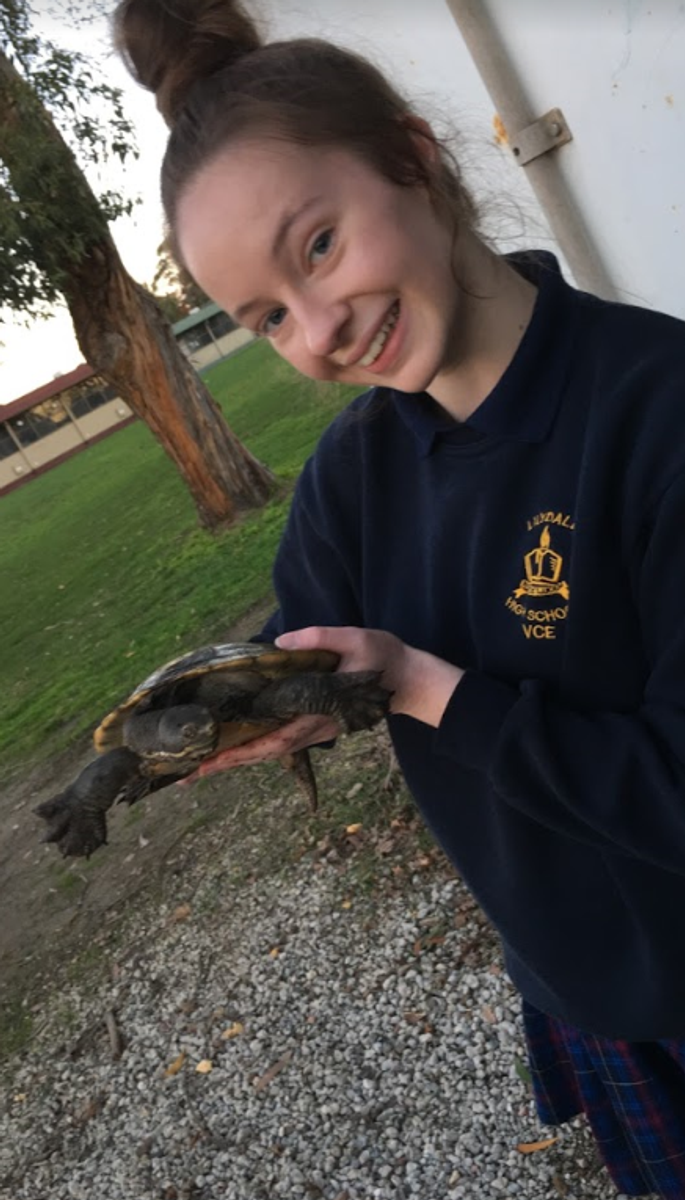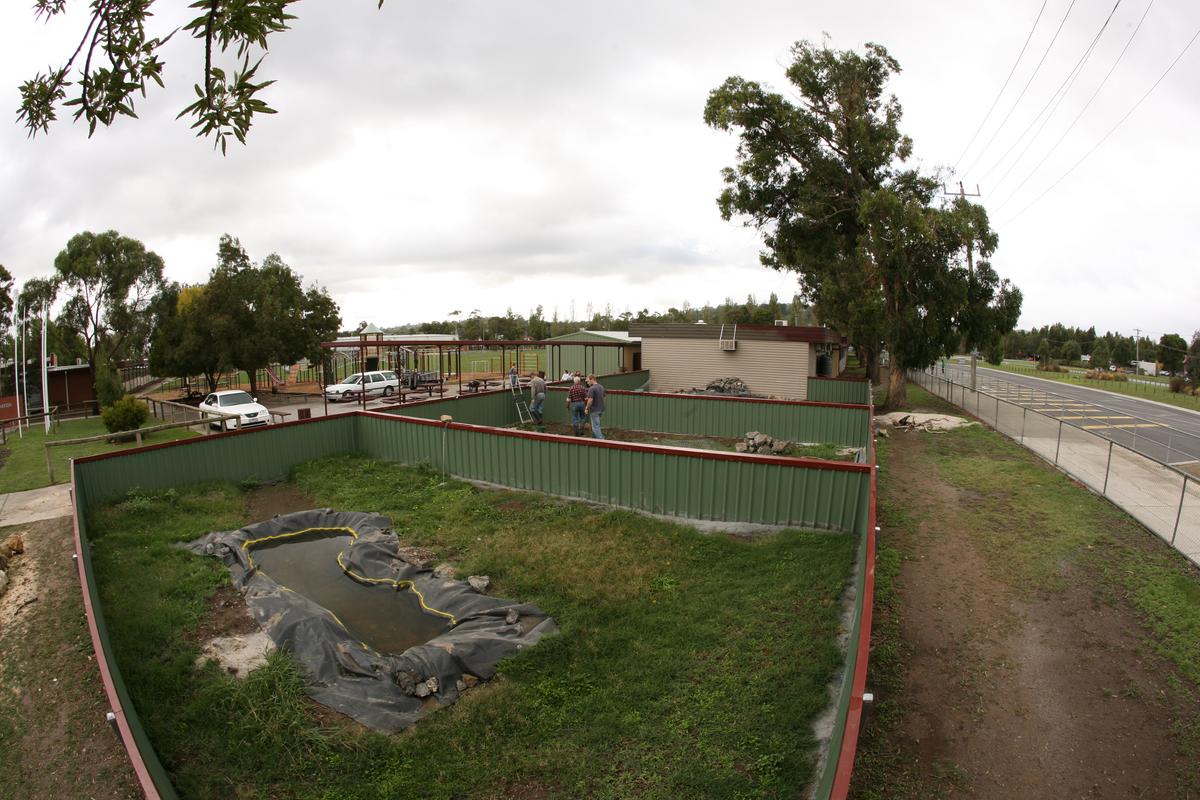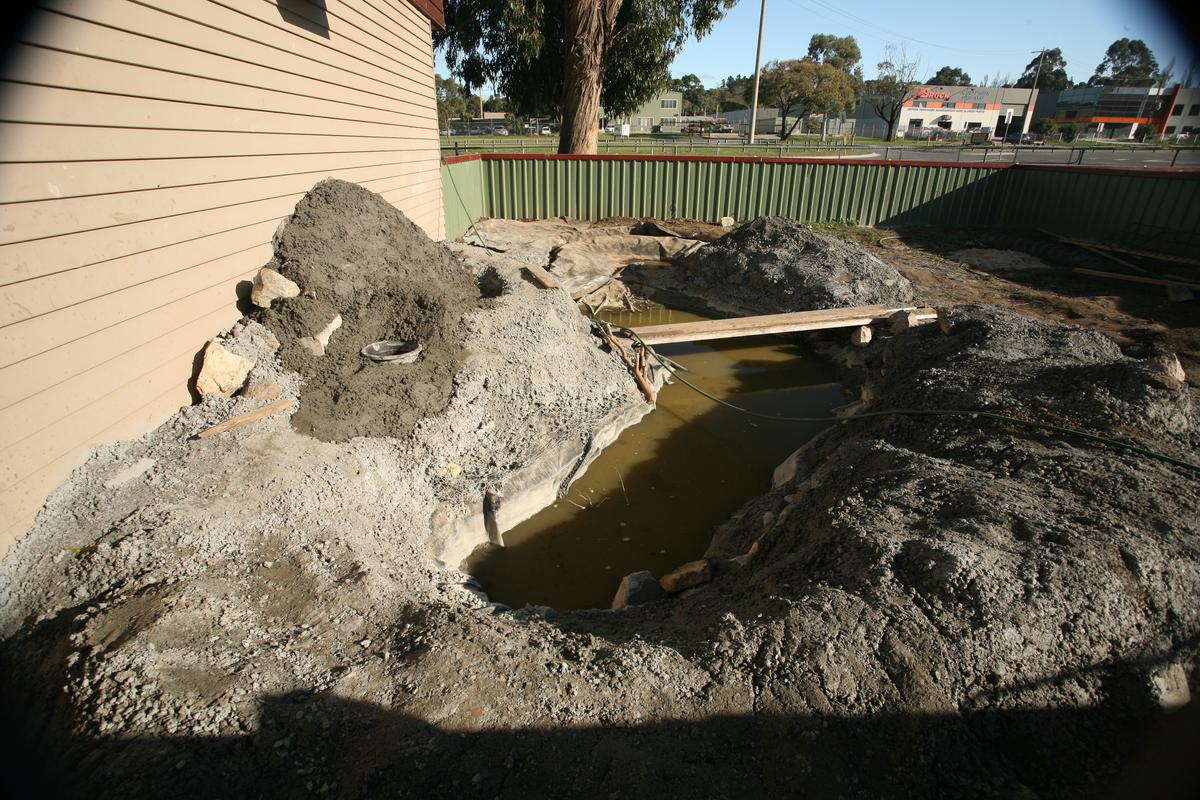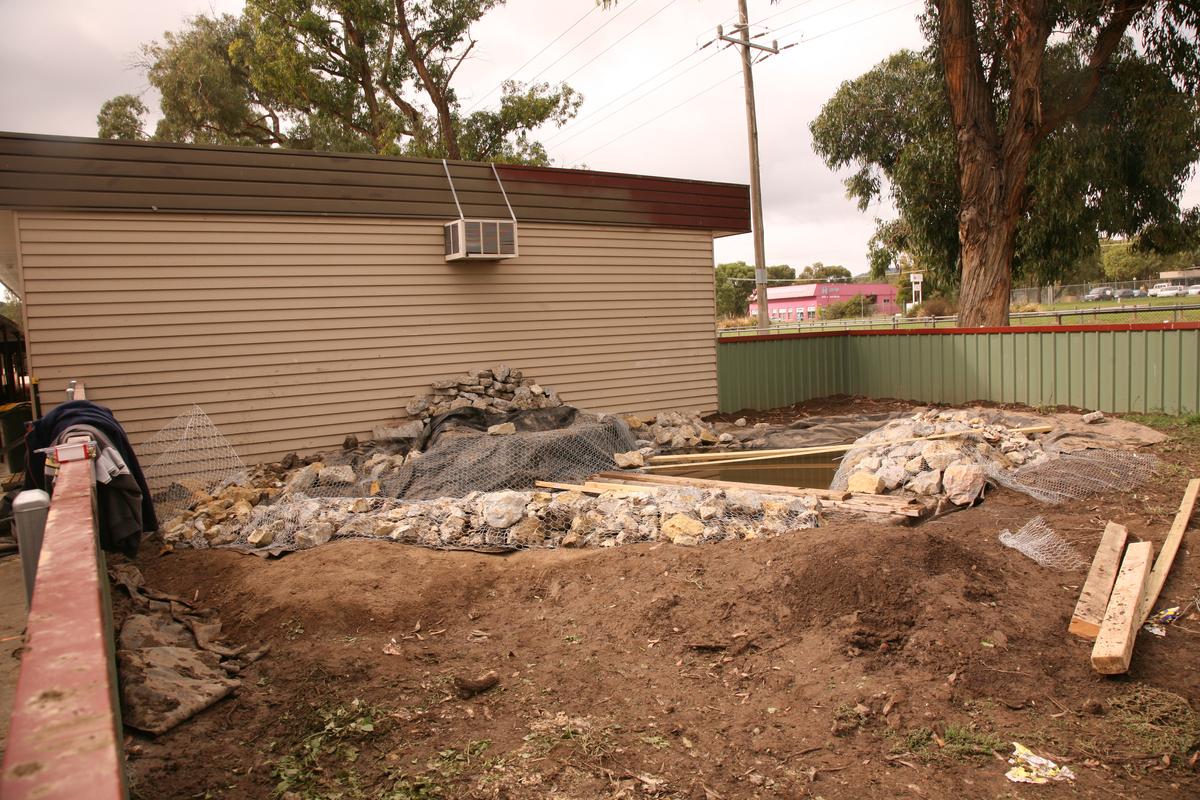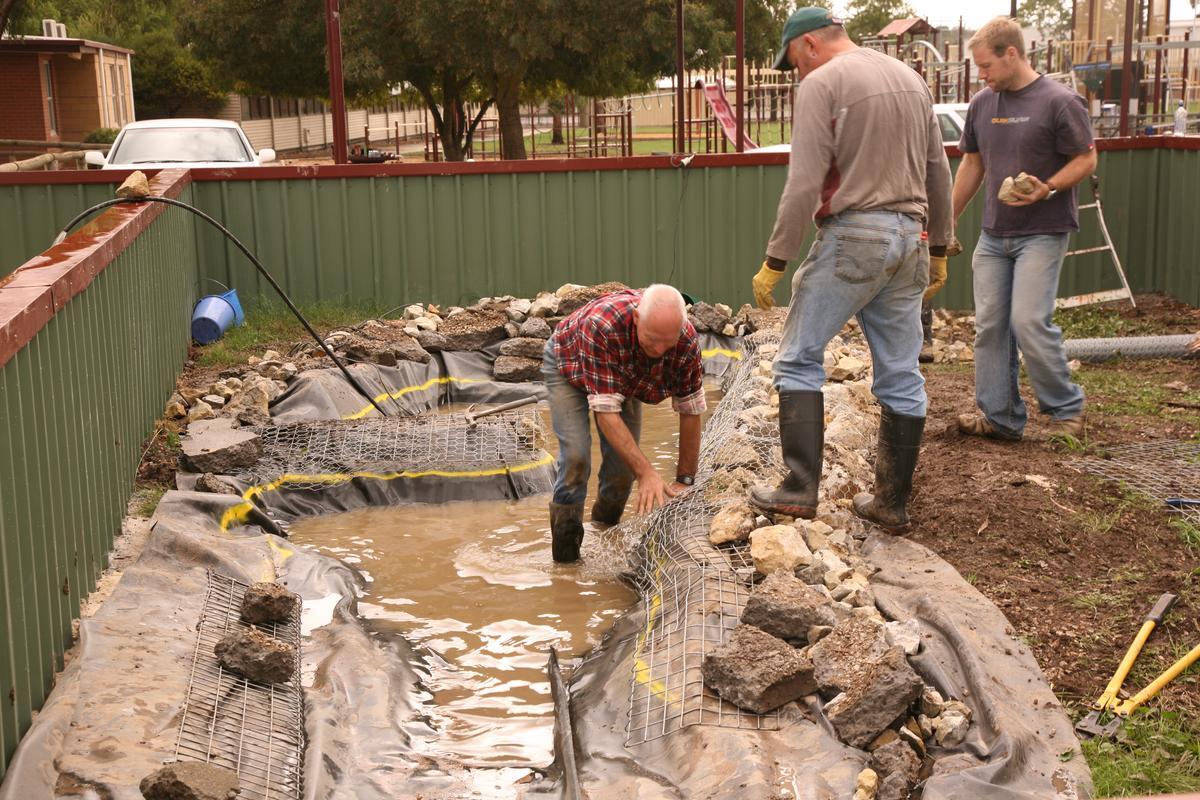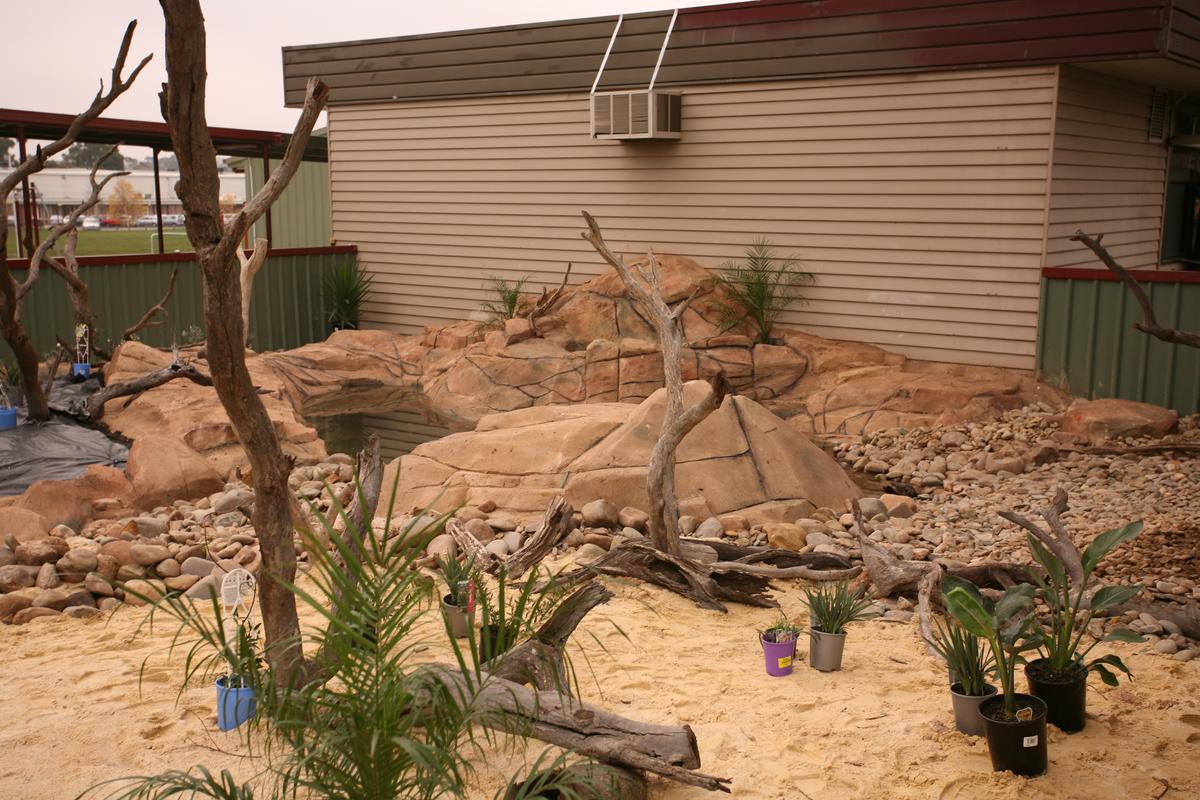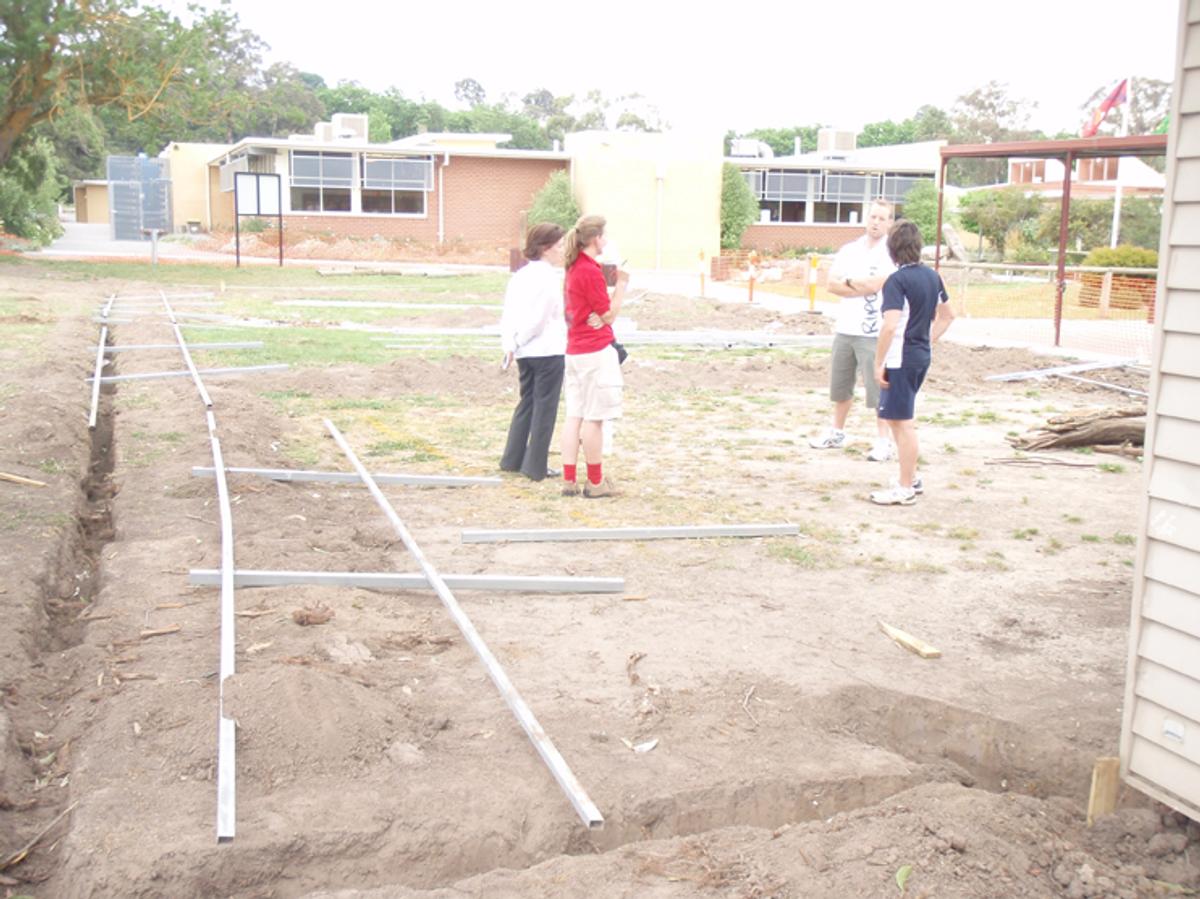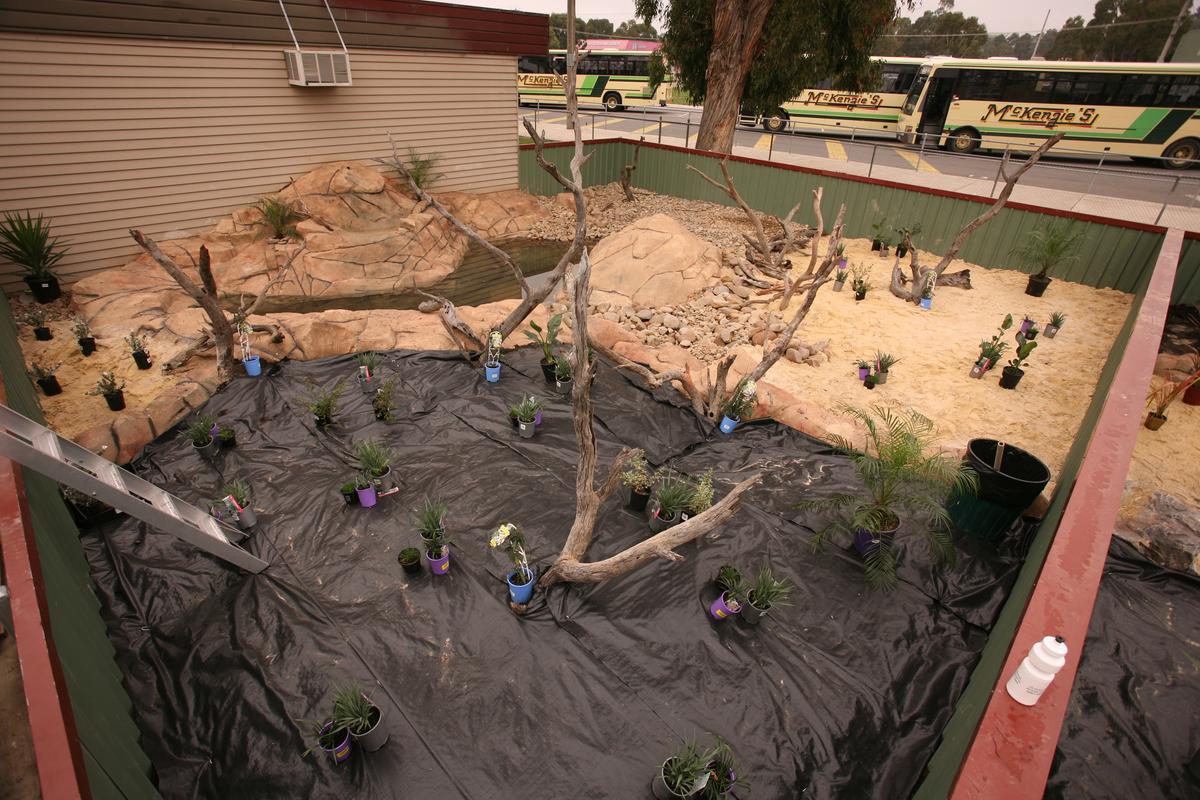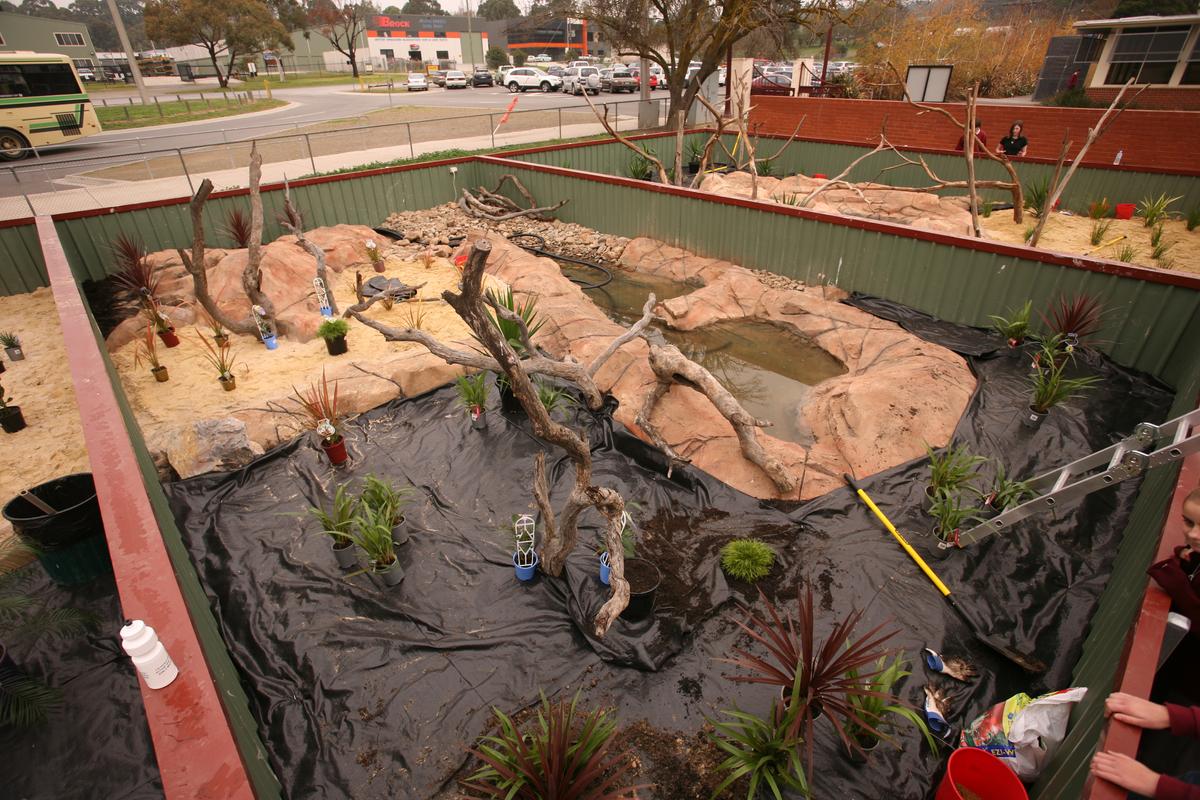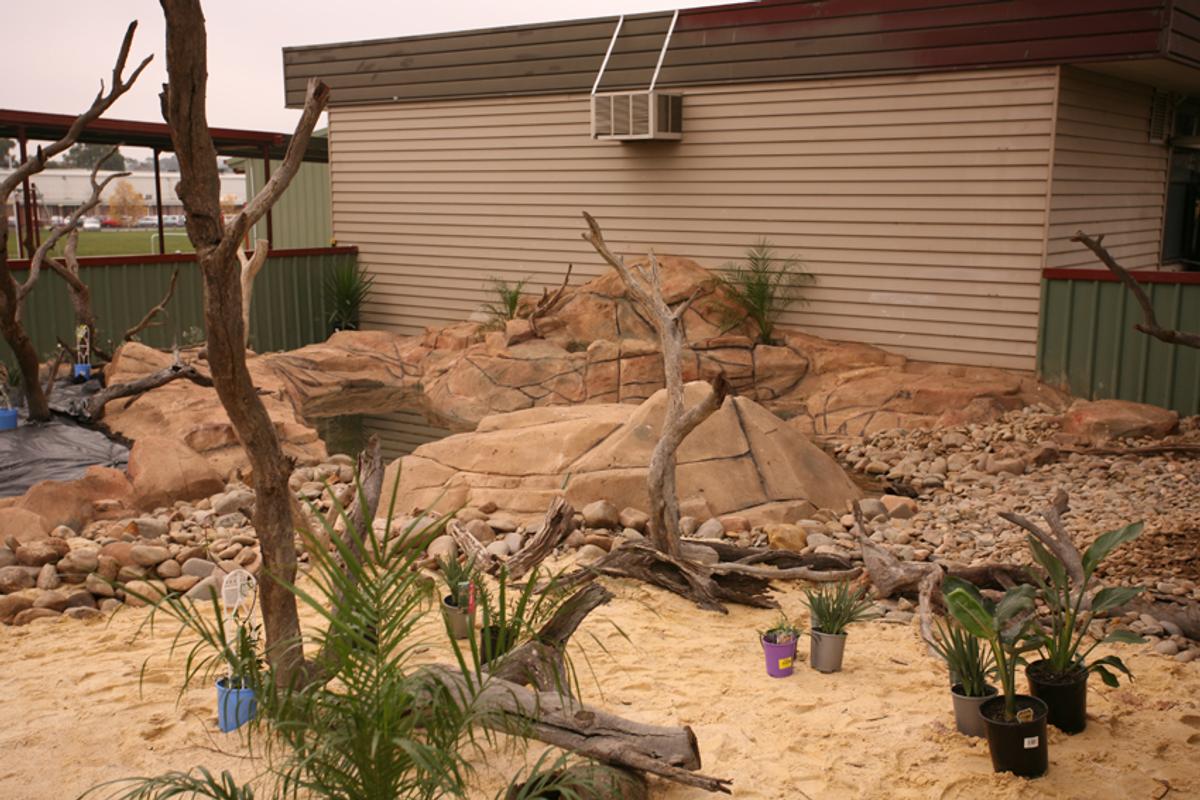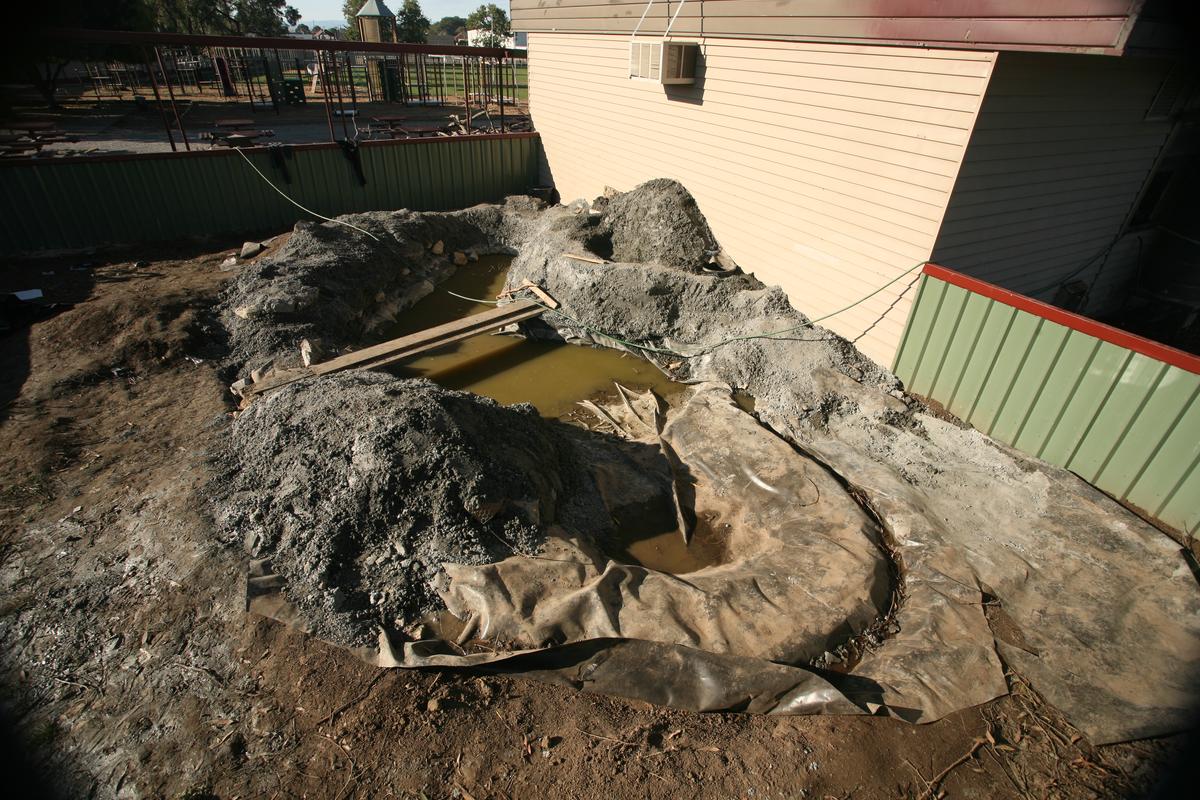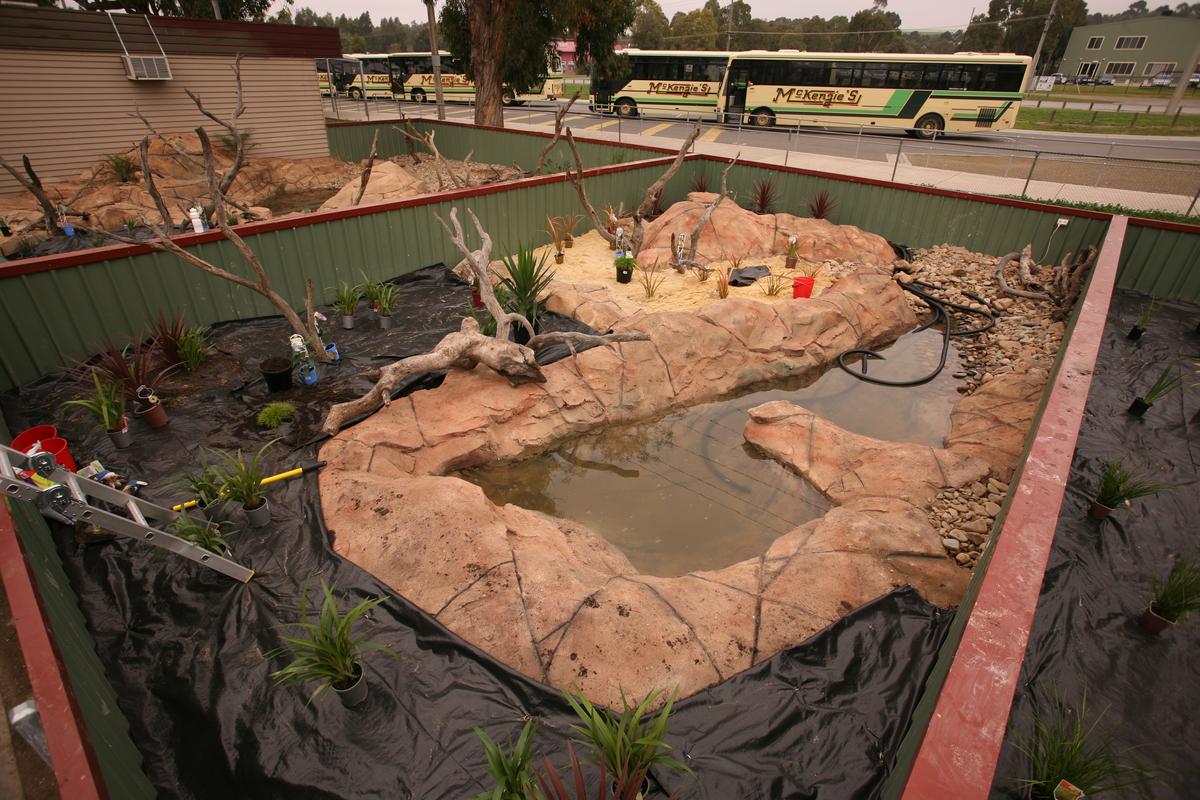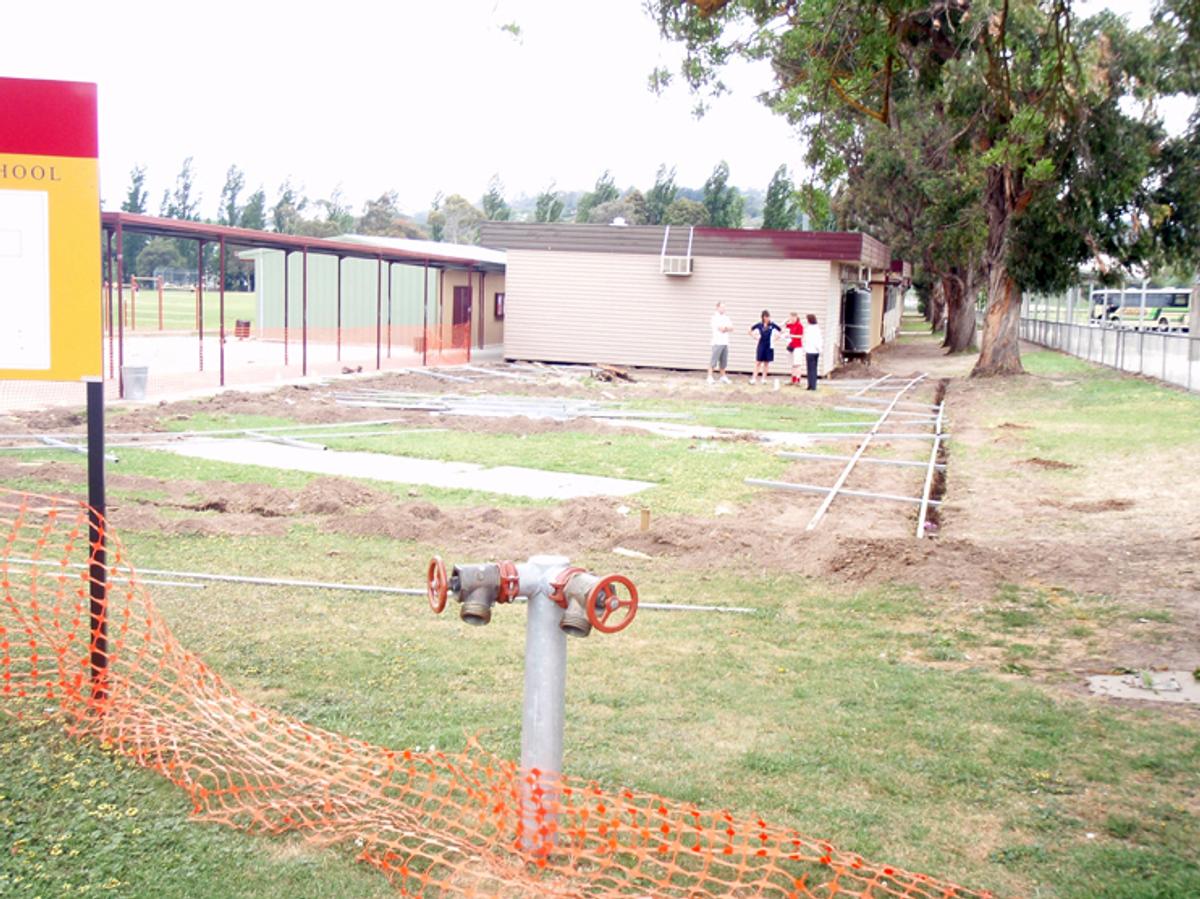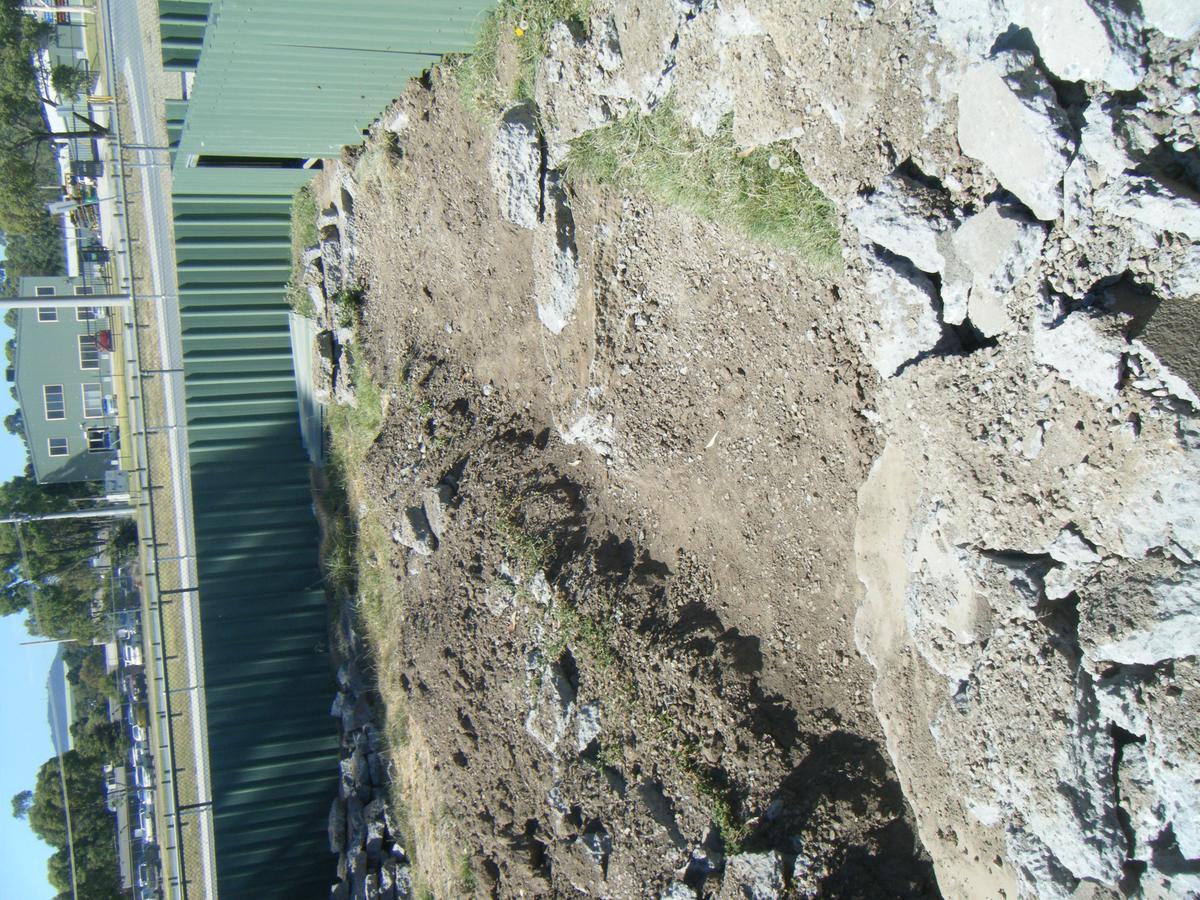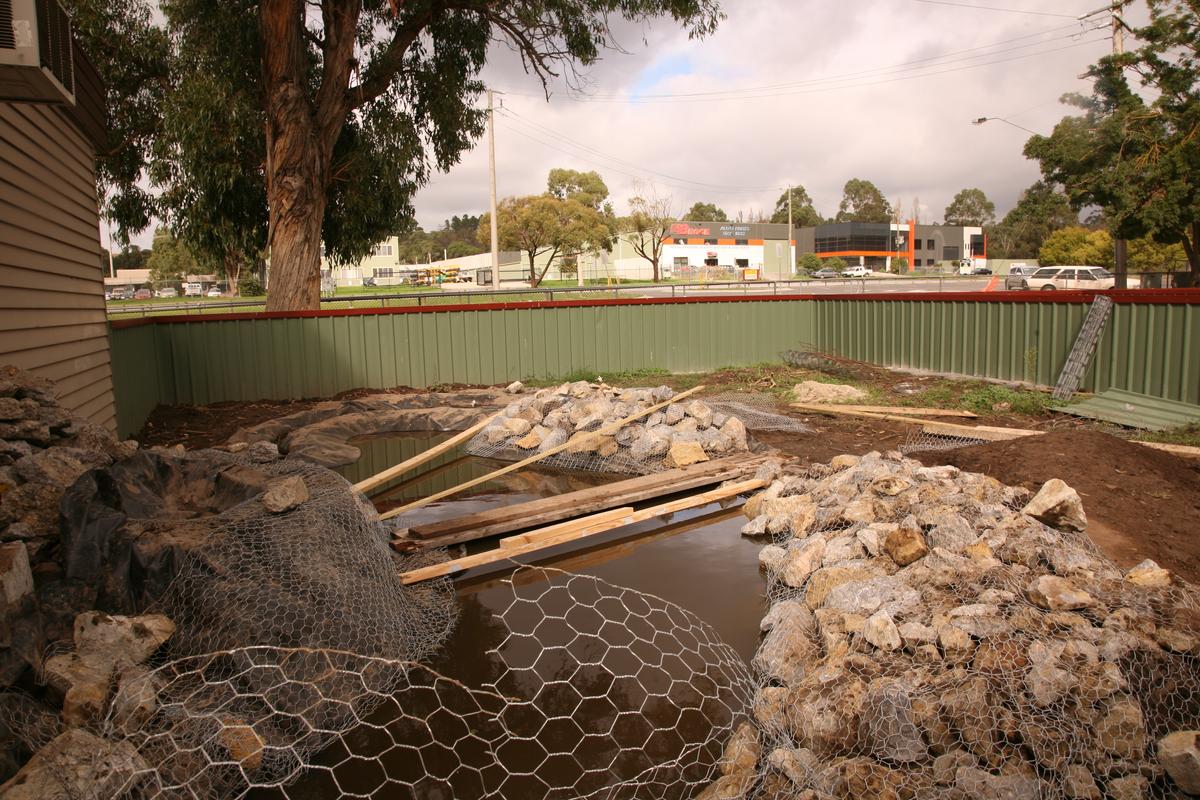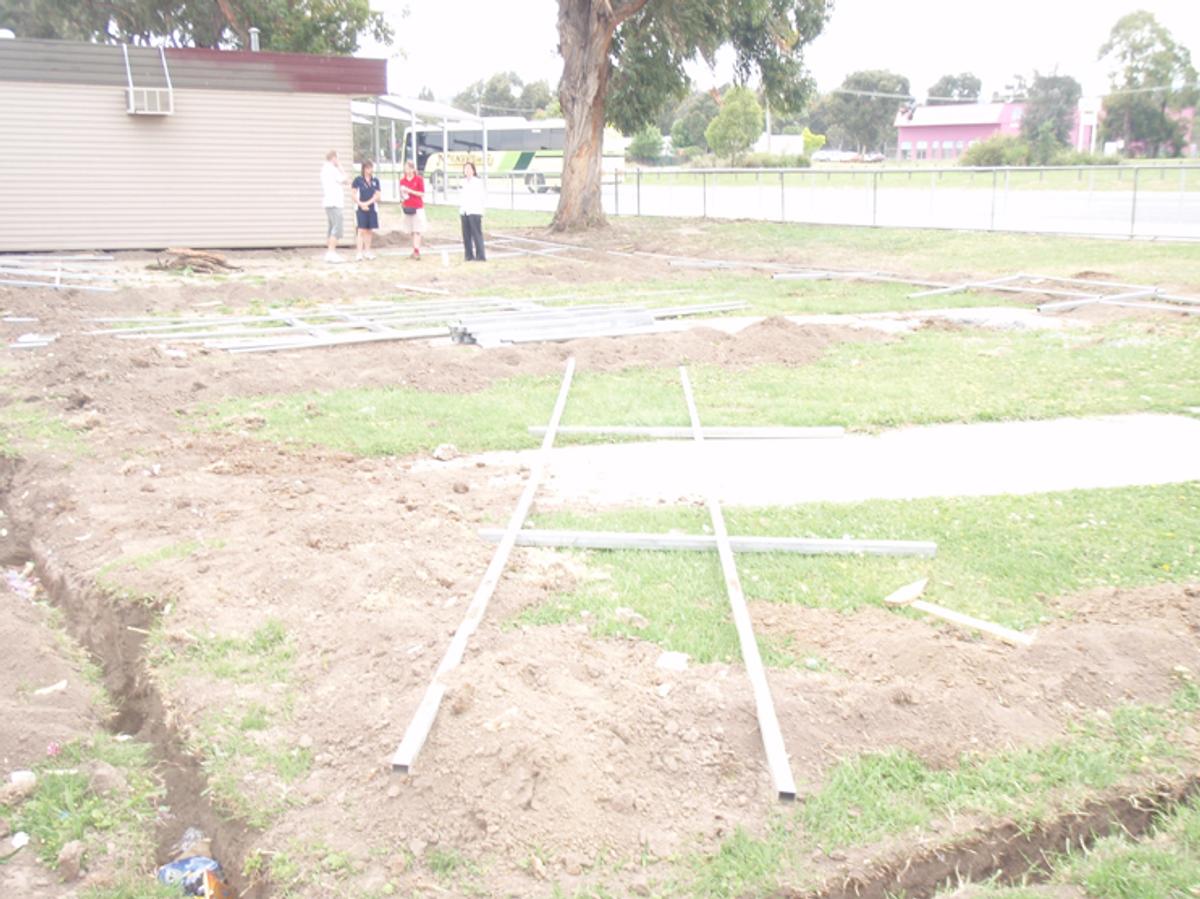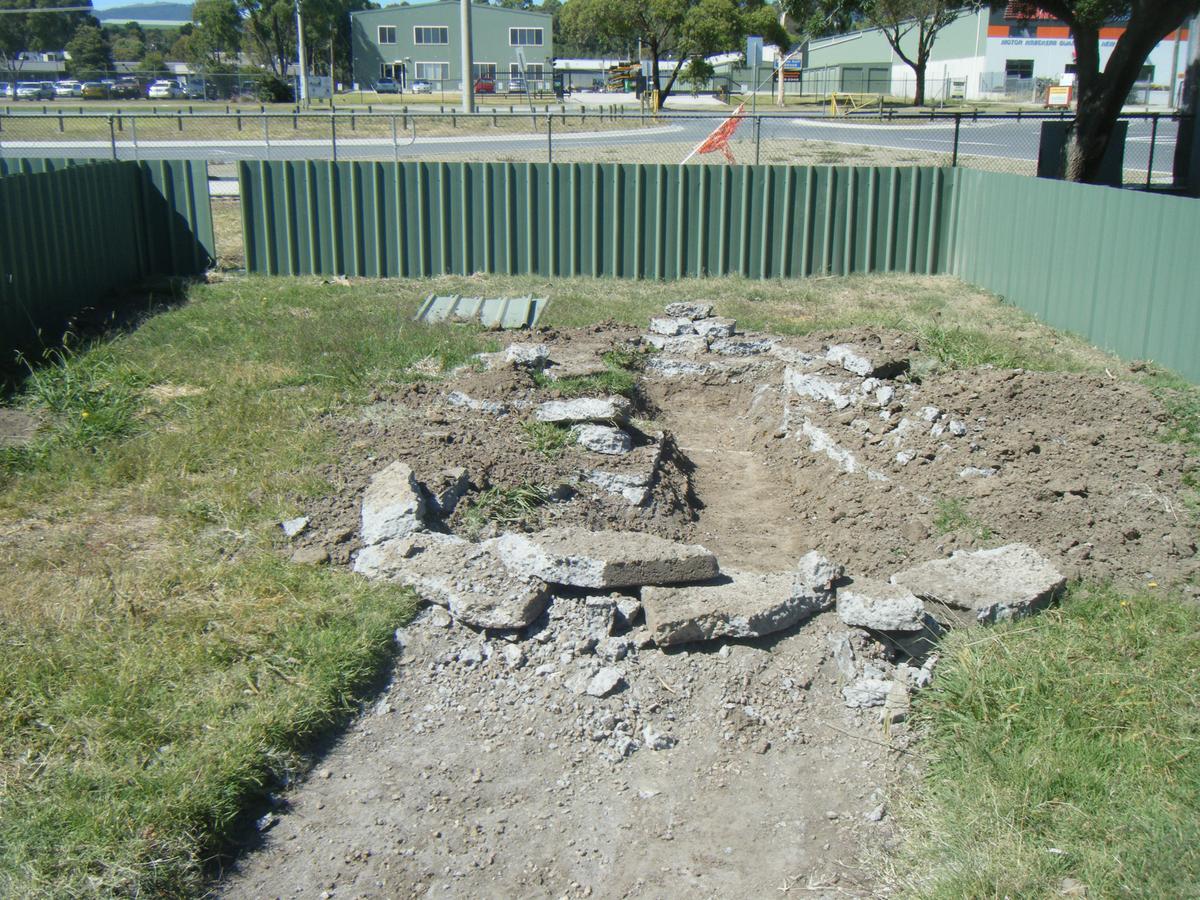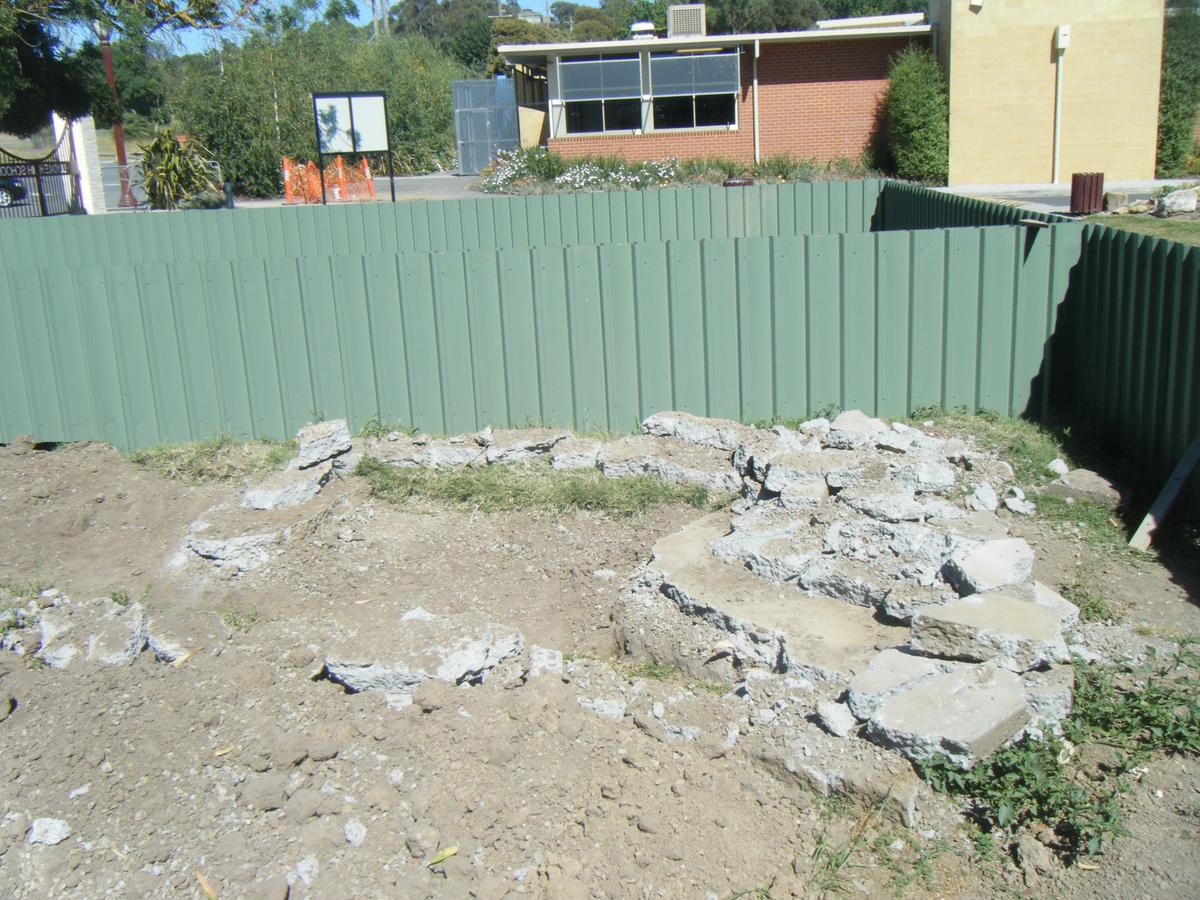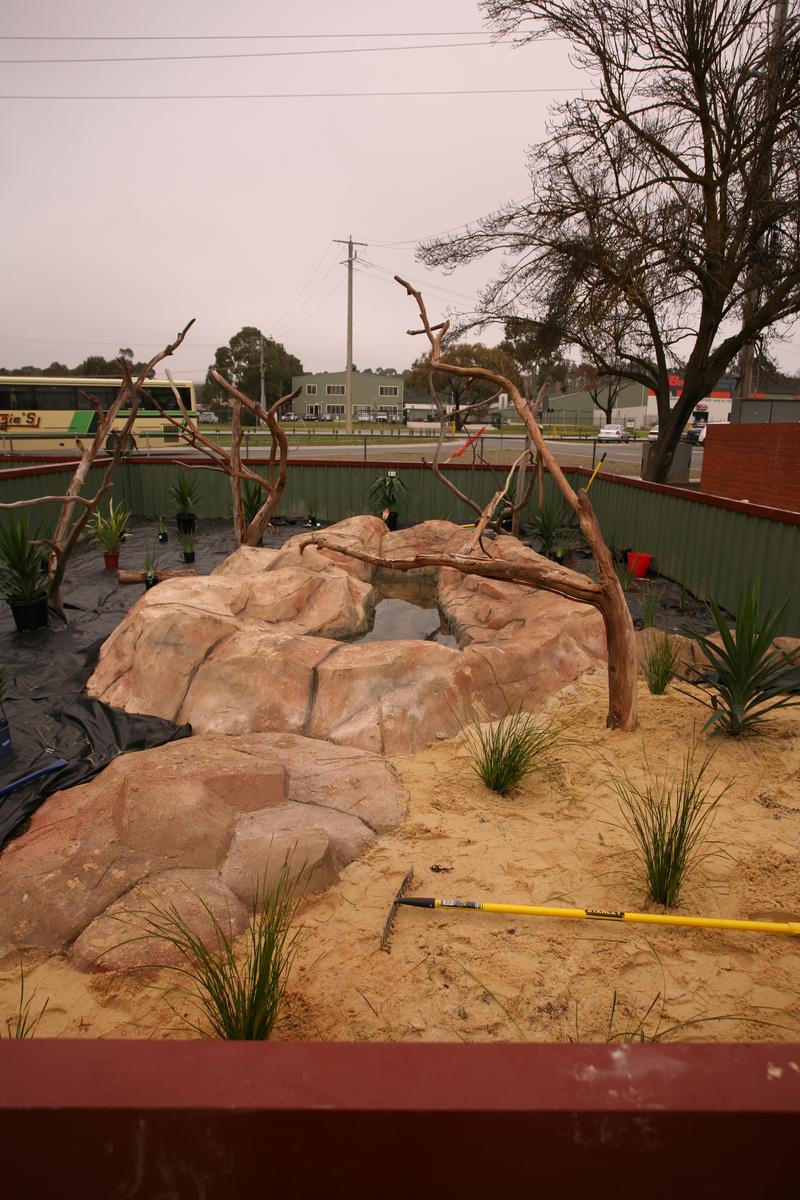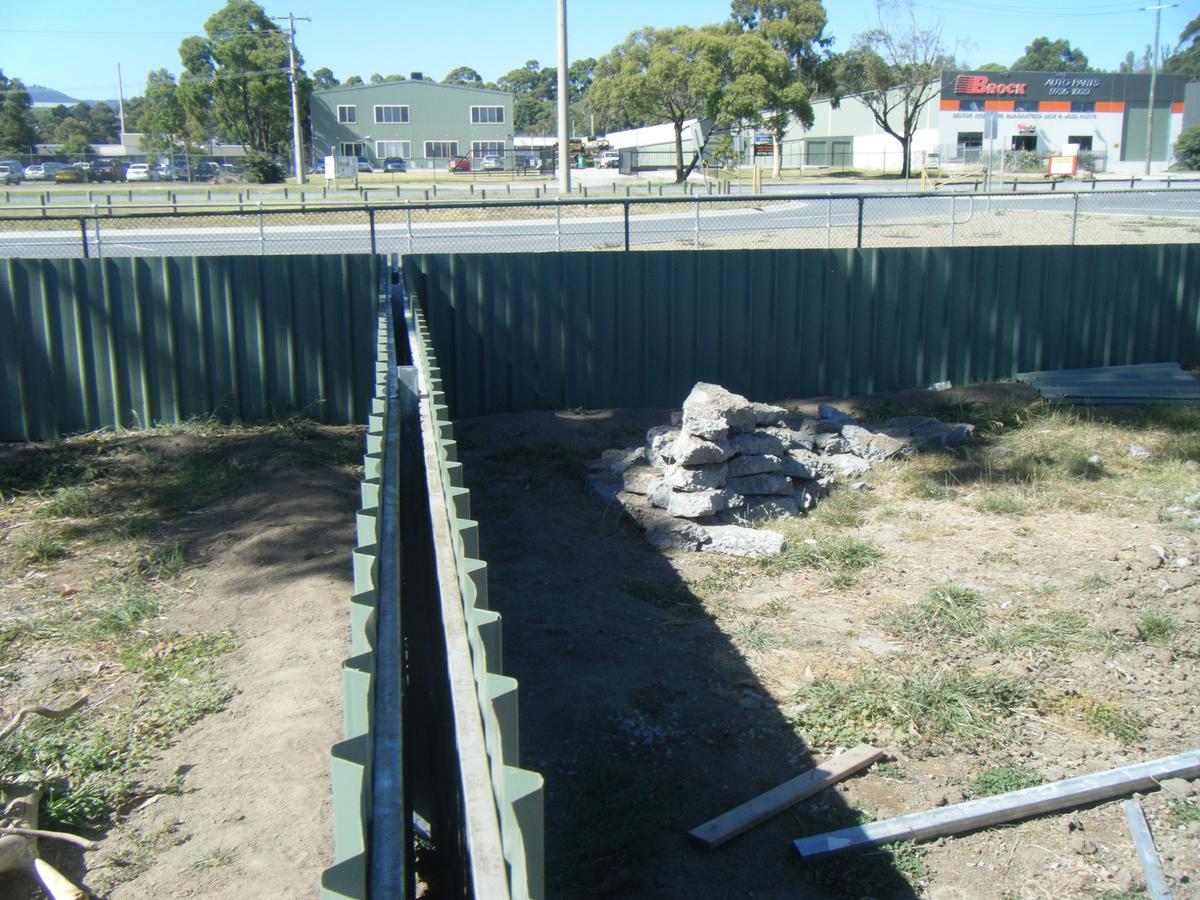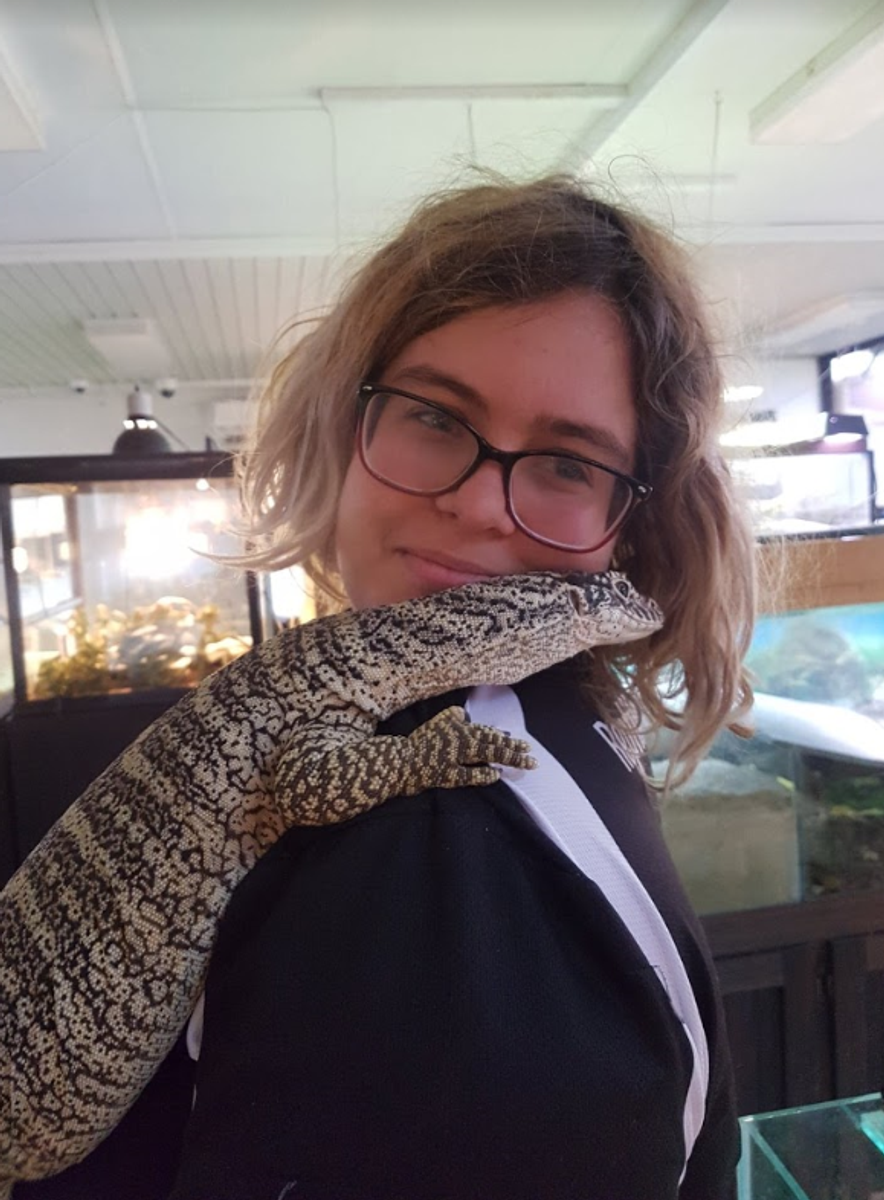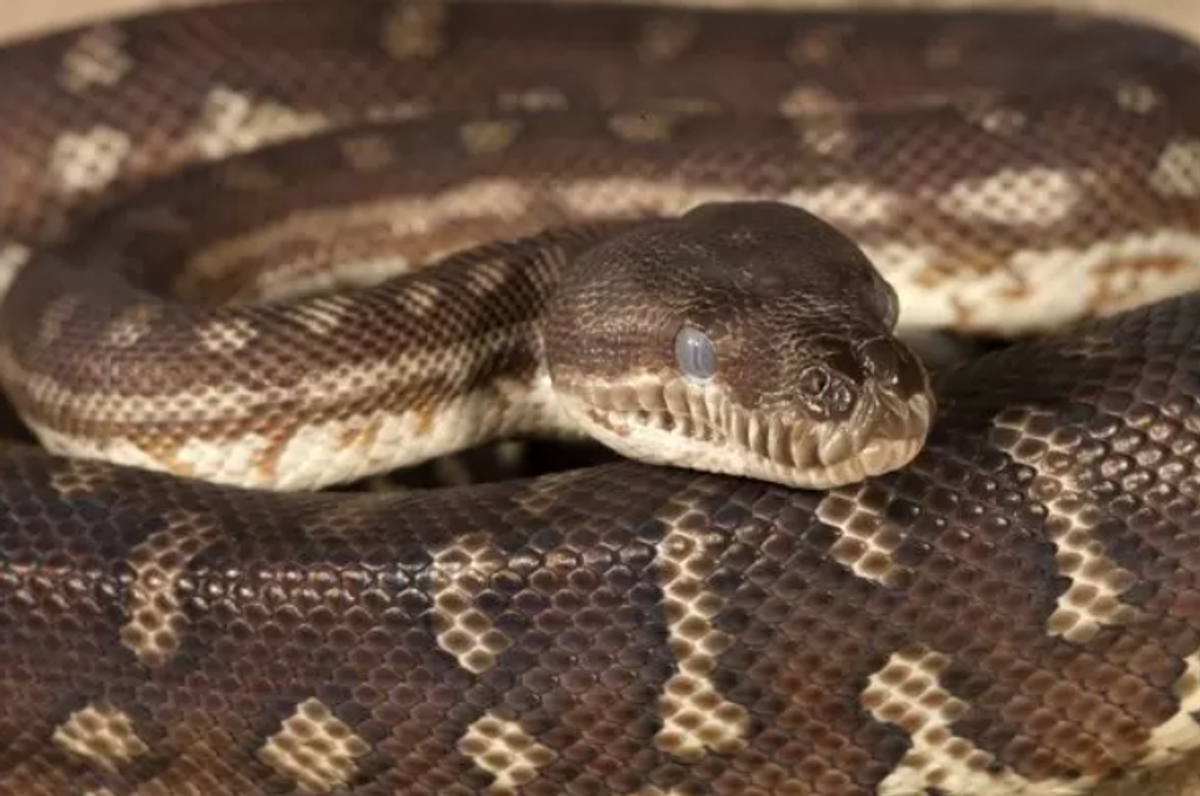REPTILE HOUSE
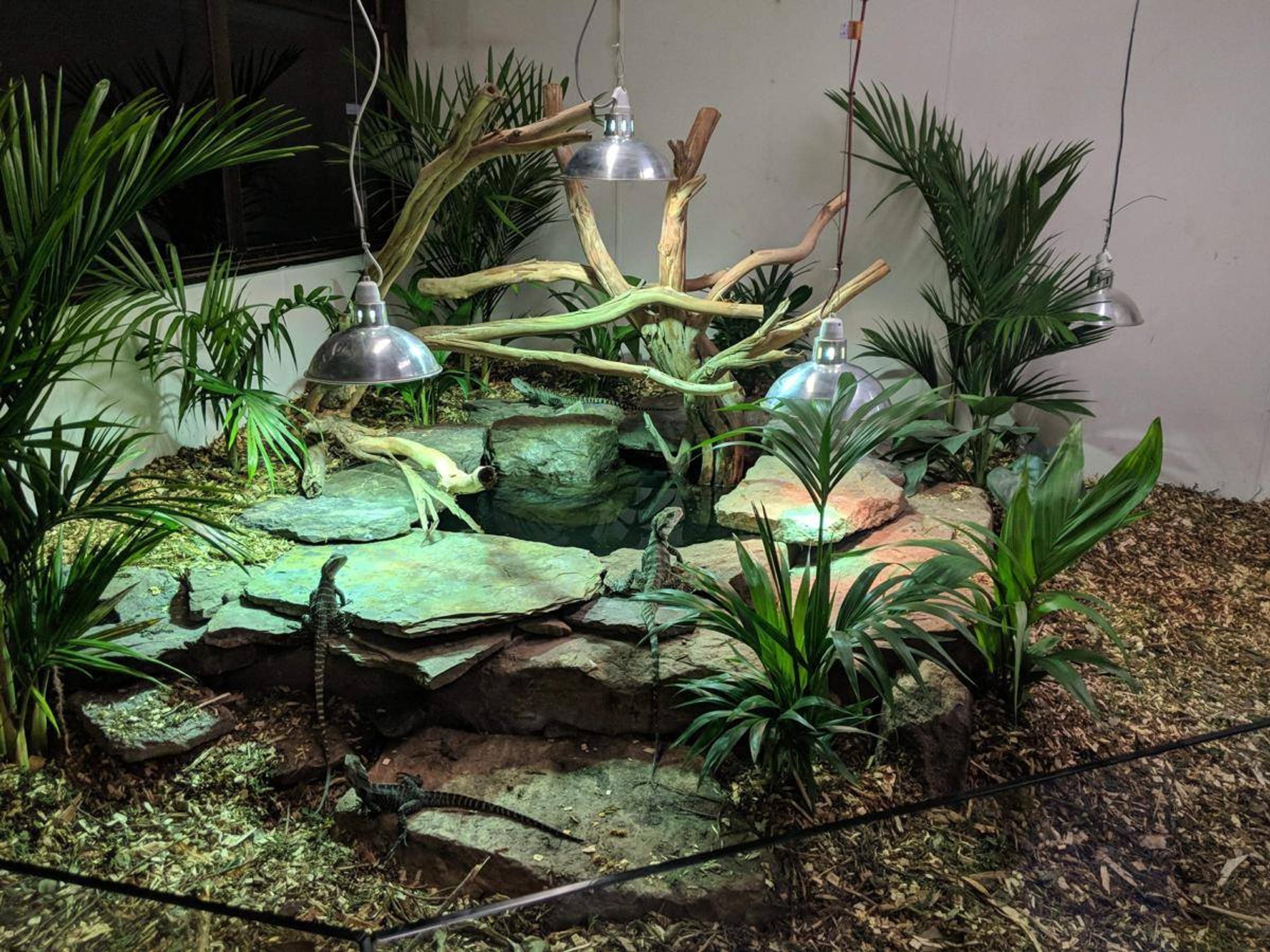
Reptile House NEWS!
With winter upon us and things are pretty quiet in the Reptile House with most animals going into brumation. This means less feeding and less cleaning, but the students are still finding there is plenty to do.
Last Friday, our VET Animal Studies students were lucky enough to have a visit from past students Teagan and Taylah Carney who brought two of their horses in to visit the students and give them an interactive presentation about horse husbandry, first aid and the use of equine equipment.
The students made the most of the opportunity and enjoyed the opportunity to get up close and interact with two beautiful horses.
It's the end of Term 2 and the end of an era for the Reptile House. These holidays, the animals will be moved from the portable into a temporary location in preparation for the start of the NEW Zoology Centre which is due to begin in Term 3.
Sadly, it will see the end of the large outdoor enclosures which have been there for nearly 10 years. All the turtles have already been removed and are brumating in the winter homes.
While, it will be disappointing to see these enclosures demolished, we’re excited about the future and happy to make way for the new building, which will see our animals housed in more spacious enclosures in a purpose built facility, that will allow for greater student involvement and stronger educational opportunities.
The holidays will be busy, with over 80 enclosures to move out and more than 200 animals needing to be relocated.
We are currently in the final stages of designing the building and we look forward to sharing the plans of the new facility in near future.
Marcus Whitby
Keeper Profile
Name: Tamalyn Cahill
Age: 16
How long have you been a keeper in the Reptile House?
Since Year 7, 2015. I'm in Year 11 now.
Which animals do you enjoy working with the most?
My most favourite animals in the Reptile House are by far the bigger species, such as the scrub python (Morelia amethistina) and some of the larger carpet pythons (Morelia spilota) as well as your large monitors, such as your lace monitor (Varanus varius) and the Spencer's monitor (Varanus spencerii).
What is you most memorable moment?
Probably hatching my first clutch of children's pythons and getting them their first feed. Babies are extremely picky and it can take up to six months for them to feed. Now all but three out of ten, have found their forever homes.
What do you enjoy the most about the reptile house?
Learning new things about the animals and getting to have a place to hang out with friends as well as having a safe space.
What are you aspirations for the future?
I’ve wanted to be a exotic vet since for as long as I can remember.
Which is your favourite animal and why?
C23, the Spencer's monitor.
How long you’ve worked with this animal?
Since Year 7, when he first arrived as a baby, with his three siblings (two of which we still have today, Duke and Possum. Unfortunately, his sister passed away when she was quite young).
What do you need to do to take care of your animal?
Spencer’s monitors are found in central Queensland and Northern Territory, Australia. They need to be kept warm with temperatures between 25 and 30 degrees celsius on the hot side and a basking temperature of 50 degrees celsius or more, while overnight temperatures can drop to below 20 degrees. He is provided with enrichment by taking him outside, introducing fresh gum branches, rearranging his furniture, offering him a variety of food items at irregular intervals, handling him and making him work for his food. This keeps him healthy and his mind healthy too, since they are an intelligent lizard species.
What does your animal eat?
As the Spencer's monitor is prone to overeating and becoming fat (especially in captivity), he gets fed one or two times a week with a combination of day old chickens, chicken necks, quail eggs and two small mice or two small rats once a month, as rodents contain more fat than bird products.
Why is your animal, the best to work with in your opinion?
He is the coolest in my opinion because we have a very special bond. When he was a baby, he was bitten on the face accidentally during feeding, which resulted in an infection in his ear. I took care of him during this time and because of that, our bond grew and now he is by far my favourite animal.
What is your leadership role?
My role in the Reptile House is Specialist Keeper. I take care of sick, young and breeding reptiles.
What do you enjoy about this role?
I enjoy researching about the different species that are being bred. As you get to learn more about their personalities, the more you work with them. I also enjoy raising young reptiles.
Why did you choose to apply for this role?
To start with, it was to get closer to being a Vet in my future, but soon it became something that was just natural to me. Taking care of young and sick animals was something I was good at and it shortly became something I knew, I had to do, especially after Mr Whitby and Mike Swan suggested it was a role that I would be good at. So here I am.
What do you look forward to the most with the new centre being built?
By the time the new centre is built and completed, I will be pretty close to finishing my VCE and leaving Lilydale High unfortunately. However, I will be coming back every now and again and I look forward to meeting new keepers, new animals and even older ones too.
Creature Feature 4
Centralian Carpet Python
The Centralian Carpet Python (Morelia bredli) is a large snake (2.5m) restricted to a distribution within a 200klm radius of Alice Springs.
It was first recorded in 1870, but it was not until about 100 years later, that it was described as a sub- species (Morelia spilota bredli) of the more widely distributed carpet pythons.
Northern Territory museum worker, Graeme Gow, named the species after the noted Australian herpetologist, Joe Bredl. It is now recognised as a full species (Morelia bredli).
The overall body colouration of reddish-brown with darker variegations, allows this species to blend well with the natural environment of the ‘Red Centre’. These colours also no doubt inspired, Indigenous Australians with their dot paintings.
The Centralian Carpet Python occurs in gorges and rocky outcrops along mostly dry watercourses. It feeds on mammals, birds and reptiles which it kills, by seizing and coiling tightly enough around them, to restrict breathing, resulting in suffocation.
Like all pythons, it is oviparous and non-venomous but still capable of delivering a bite.
Mike Swan

